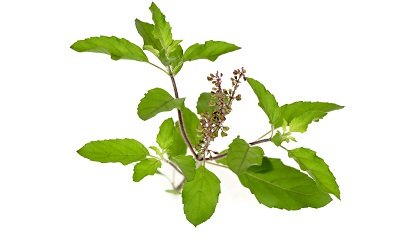Inside BENEO’s new pulse plant: pioneering sustainable protein from faba beans
The Central Institute of Medicinal & Aromatic Plants, Lucknow, a frontier plant research laboratory of Council of Scientific and Industrial Research (CSIR) has published whole genome sequence of Ocimum sanctum, the wonder plant ‘Holy basil’ or ‘Tulsi’, which is revered as ‘Vishnupriya’ and worshipped for over more than 3000 years through the sacred traditions of Hindu culture. This is the first report of complete genome sequence of a traditional and most respected medicinal plant of India, using a composite next generation sequencing technologies.
Considering the metabolic and therapeutic potential of this revered plant, the availability of whole genome sequence is the first step to understand and unravel the secrets of this ‘mother of all herbs’ and to provide scientific validity to the traditional claims of its utility in diverse medicinal usage.
Being the most popular household plant in India, ‘Holi basil’ or ‘Tulsi’ is traditionally used for the cure of several ailments. This herb is described as “The Queen of Herbs,” “The Incomparable One” and “The Mother Medicine of Nature” in the Ayurvedic text of Charaka Samhita. All parts of this legendary, divine and most cherished ancient herb (dried leaf, dried seed, and dried whole plant) are used in several systems of traditional medicine, including Ayurveda, Greek, Roman, Siddha, and Unani. It is used in the preparations to cure various diseases like bronchitis, bronchial asthma, malaria, diarrhea, dysentery, skin diseases, arthritis, painful eye diseases, chronic fever, insect bite etc. It has also been described to possess anti-fertility, anti-cancer, anti-diabetic, anti-fungal, anti-microbial, hepatoprotective, cardioprotective, anti-emetic, anti-spasmodic, analgesic, adaptogenic and diaphoretic actions. Many of the basil oil constituents have found applications as medicinal ingredients, flavors, fragrance, etc.
‘Holi basil’ or ‘Tulsi’ is rich in phenylpropanoids, terpenoids and their derivatives, and many of these are implicated for different therapeutic activities. The availability of the genome sequence now opens the possibility to identify genes involved in producing therapeutic molecules and to produce them in vitro. This will also facilitate identification of not yet identified genes involved in the synthesis of important secondary metabolites in this plant. Specific pathway related genes identified or mined in this genome could be used for the production of secondary metabolites following synthetic biology approaches. The development of molecular tools and genomic resources will accelerate molecular breeding and ultimately the utility of Holy basil in medical community.
The nuclear genome of Holy basil is the smallest (386 Mb) in the family Lamiaceae while the chloroplast genome (142,245 bp) is the smallest in the order Lamiales. According to the chloroplast genome similarity, O. sanctum shows maximum evolutionary closeness to Salvia miltiorrhiza, a plant of Chinese system of traditional medicine. Although, both these plants predominantly produce phenylpropanoids, and both have the identical diploid number of chromosomes (2n = 16), the genome size of O. sanctum (386 Mb) is a little more than half of the genome size of S. miltiorrhiza indicating that O. sanctum genome is more compact than that of S. miltiorrhiza.

